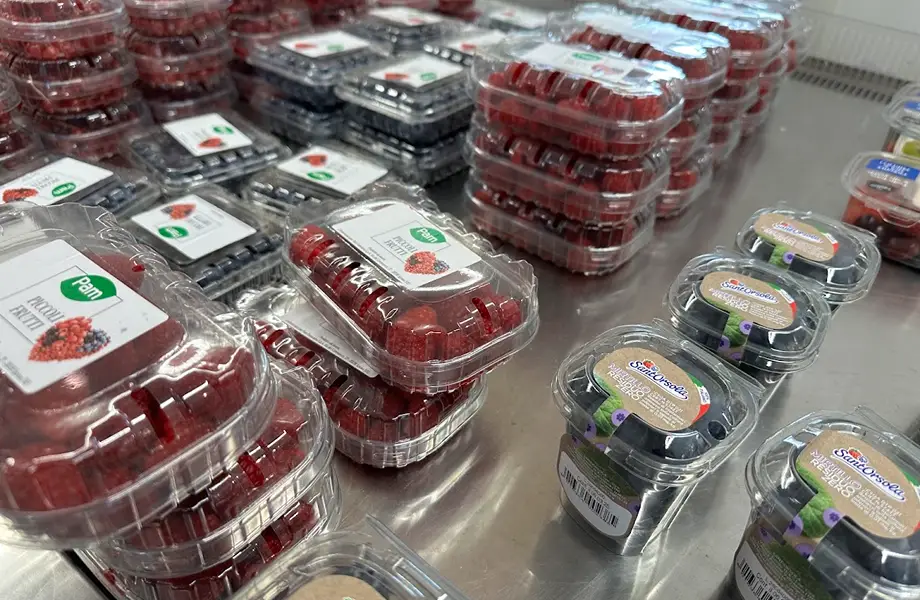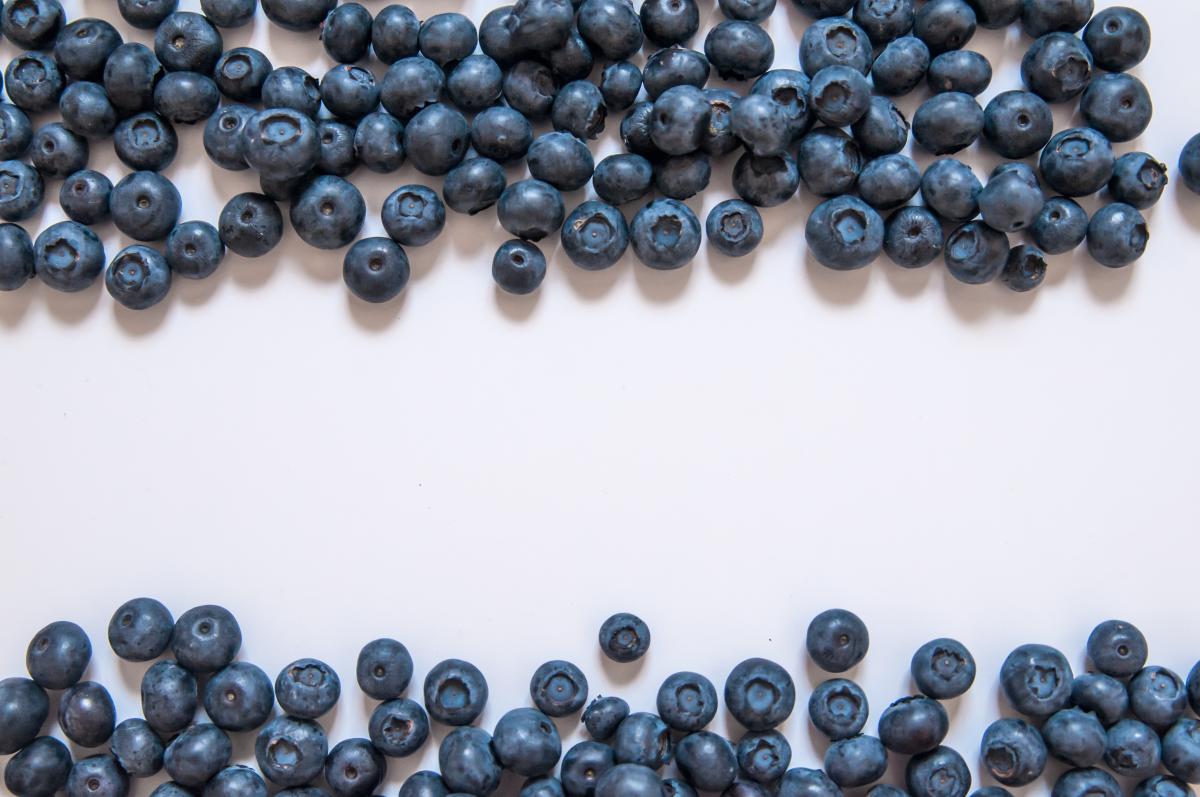In this article, originally published in the Polish newspaper Jagodnik, the main critical factors for the sustainability of production blueberry in Poland are analysed: climatic challenges, labour shortages, increasing market demands for packaging, investments in technology (packaging machines and harvesters), changing competitive scenarios (competitors and markets).
The market for blueberries in Europe is one of the fastest growing in the fruit and vegetable segment. The production and consumption of these berries is constantly increasing. Although 2021 was not a very good year, experts show that the industry still has room for newly established plantations, and the fruit grown on them will still be marketable. However, following the needs of consumers and retail chains is the key for farms at blueberries.
HARVEST TIME AND DURATION
Thestart of last year's growing season was a difficult time for growers in Poland due to several factors. Usually, the harvesting season for blueberries in Poland lasts from 1 July to the end of September, with shifts of only a few days. In 2021, the spring was very cold, which played a role in the delayed flowering and an average delay of two weeks in the country's harvest. Low temperatures during flowering affected the flights of many pollinator species around the plantations.
In addition, the central and south-eastern regions of Poland experienced relatively heavy rainfall, which caused damage and poorer fruit quality. The blueberries absorbed too much water and split.
Things were different in the Pomeranian region, where the season usually starts two weeks later. The additional delay due to the cold spring led to a shorter harvest period of 6 weeks, whereas under normal conditions it takes up to 13 weeks.

CUSTOMISED PACKAGING
The operations of many farms are severely affected by worker shortages, the ever-increasing cost of maintenance and problems due to the COVID-19 pandemic. Producers at blueberries seeking to reduce the number of employees are increasingly looking for new solutions throughautomation of their production in order to speed up work at every stage of preparing fruit for sale.
Growers usually start buying fruit packing machines in autumn and winter. In fact, last year many farmers decided to make the purchase or inquired about the products even during the harvest. Sorting, weighing and packaging systems for blueberries were the most popular equipment. Interest in machines and weighing systems is growing every year. The past season has clearly shown that the purchase of machinery for packing fruit is a necessity, given rising labour costs or a lack of workers. While increasing labour efficiency remains a priority for Polish companies at blueberries, timely fruit picking is also vital.
Retail chains have introduced non-standard container sizes and types to attract customers. Increasingly, blueberries is sold in packages of 300 g, 700 g or 1000 g. Environmental protection and waste reduction play an important role in these changing trends.
Consumer awareness and EU legislation restricting the use of plastics in the food industry are forcing retail chains and retailers to look for new fruit packaging solutions. It is becoming increasingly common for retailers to have their own packaging strategies in place in an attempt to prepare for the coming changes. What they offer may include blueberries packaged in environmentally friendly paper or cardboard containers, as well as in plastic containers made from recycled materials.
This raises the question of whether growers are able to adapt to prevailing trends and customer expectations when considering their long-term business? Those who own equipment for only one type of container can encounter considerable problems when customer needs change or when they want to find new customers. This is why growers are increasingly interested in purchasing tailor-made packaging lines, which will allow them to package different formats.
Investment in emerging technologies not only prepares growers for market changes, but also leads to increased production efficiency. The system for sorting blueberries according to its hardness is just one example. Once an automatic sorter is in service, packaging efficiency increases several times and the number of workers needed to prepare the finished product drops dramatically.
In Poland, recommendations for plantations of 20-50 hectares include automatic sorters which - depending on the quality of the fruit - can sort 1.5-2.5 tonnes of blueberries per hour.
The pandemic and the associated restrictions have meant that consumers are turning more often to hermetically sealed fruit. Containers that offer no possibility of accidental opening are more hygienic and environmentally friendly. They do not have plastic lids, but instead use a top-seal closure technology. Applications of this method include the packaging of blueberries in recycled plastic containers and in cardboard or paperboard containers.
In addition to choosing the right type of packaging, growers must ensure that it is correctly labelled according to the requirements of the specific fruit consumer.Labelling equipment can be installed in both manual and automatic packaging lines, as it can improve packaging efficiency and the visual appearance of the final product.
The time required for operation is greatly reduced thanks to the easy-to-use software, quick film replacement and adjustment of variable data such as expiry date, exact packaging time and barcodes on the packaging film and labels.
COMPETITIVENESS
The availability of blueberries on the market is practically constant throughout the year. June is an exception due to the end of the Spanish season and no blueberry from Poland is still on sale. Having recognised this opportunity, some growers have started to grow blueberries in tunnels to anticipate the harvest by about 2-3 weeks.
Companies that produce, buy or package fruit are constantly looking for new markets. Recently they have turned their attention to Arab and Asian countries. Customers in these regions are demanding in terms of the quality of the goods. Forward-looking growers invest by planting new varieties whose fruit has the right appearance, high quality and excellent taste qualities combined with durability to meet the needs of the target market.
By entering new markets in Asia through the marketing of high quality products, growers have a good opportunity to achieve higher margins than in European or domestic markets. The blueberries are shipped to these regions by air or sea in air-conditioned containers.
In Poland, we observe a continuous increase in the number of blueberries highbush plantations. New plantations range from 1 to 5 hectares, although there are also sizes of 20 hectares for one-off plantations.
In the past, the 'Bluecrop' variety has dominated the market at blueberries, causing prices to fall dramatically during the fruiting period. This makes it necessary to invest in varieties whose fruit ripens outside the Bluecrop peak. It is also important to grow new varieties with better quality parameters than Bluecrop, i.e. bigger and tastier and with a good shelf life throughout the marketing process.

With the current slump in the apple market, one can see a trend among its participants to change their crop profile. Berry production, including blueberries highbush, is the main direction in which they are looking for alternatives. With the growing demand for blueberries, it is believed that growers who invest in the right varieties will be able to secure the profitability of their crops with confidence in the coming years.
Currently, an average Polish consumer eats 200 grams of blueberries per year, while an American eats 1.5 kg. Consumers have stopped treating these berries as a side dish or dessert, but as an important fruit food since they became more commercially available. Dietary changes are also evident: salty and sugary snacks are being replaced by healthy substitutes, such as fresh fruit.
Among European countries, the largest increase in blueberries production has been recorded in Spain, followed closely by Poland. Developing countries aspiring to have many plantations are also popping up, including Ukraine, Serbia and Romania.
Being new markets, their situation is a little different because they are starting production from scratch. However, they have a lot of capital to invest, as growers are able to establish large plantations right away, up to 50 hectares at a time. This is why plantations in Poland have to upgrade and adapt to market needs if they want to remain competitive.
FORCED CHANGES
The global market for blueberry is undergoing increasingly dynamic changes. In recent years, many new countries have emerged with a steady increase in the area under blueberry and in harvests for the consumer market. A classic example is Peru, where only 10 years ago the species was basically not cultivated, but now the country has become a major producer (161,000 tonnes in 2020) and exporter (125,100 tonnes in 2019) of blueberries.
Imports of blueberries into Western and Central European countries account for almost 1/3 of world imports, while Poland's share is only about 6%. This means that this country, where blueberries exports account for almost 45% of the blueberries harvest in 2019, is in an increasingly difficult and competitive market.
Unfortunately, the increased supply of blueberries on the global market is starting to have a stronger impact on selling prices here as well. The graph shows this quite well - the prices of blueberries in 2021 were actually lower than the average 2017-2020 prices for the whole season.

In addition, there is always the so-called hole of blueberries. It lasts about a month and starts around the second half of July. The different varietal structure of our plantations means that, unless there are rapid changes in this respect, the problem of falling prices in this period will tend to get worse. On the other hand, the varieties that mature earlier and later are still "catching up" with the higher prices and perhaps offer the opportunity of better earnings.
The question of appropriate selling prices translates directly into the profitability of production. This is, of course, influenced by the level of yield, the quality of the dessert fruit and the amount of costs incurred. Despite the fact that in Poland the traditional model of growing blueberries (in the ground) is dominant on most farms at blueberries, the current costs are quite high.
With a yield of around 8 t/ha, unit costs can exceed PLN 10/kg(€ 2/kg n.d.t.). With prices as they were in 2021 - especially for plantations largely based on mid-season varieties - there may be profitability problems, as one of the main factors affecting production costs is the harvest input, which, depending on various factors, can range from PLN 3-4(€ 0.60-0.80), even to PLN 5-6/kg(€ 1.00-1.20).
For this reason, more and more growers are turning to the possibility of using a harvester to mechanically harvest blueberries.
Other factors motivating the search for alternative harvesting methods are also the shortage of seasonal workers, the effects of pandemics, the opening of borders or the constant migration of Polish labour to the West. Calculations show that the cost of harvesting blueberries with a mechanical harvester can be reduced to about 2-3 PLN/kg(€ 0.40-0.60), depending on the size of the crop.
The main question, however, will be whether the quality of fruit harvested in this way will be accepted on the European market, which receives the majority of Polish fruit exports. Some cite the example of US growers who mechanically harvest most of the blueberries for the fresh consumption market. However, one has to be aware that the specificities of that market and consumers are slightly different from those in Europe.
Recognising the variety of changes and trends in the global and national market for blueberry, especially in the berries segment, it should be concluded that growing this species may still be an attractive option for new growers. However, it is important to recognise that the growth rate of the blueberry market may be somewhat weaker in the coming years than in the last two decades.
Many experts point out that the European market is slowly becoming saturated with blueberries, with the emergence of many new suppliers, especially from third countries such as Peru, Argentina and Ukraine. This means that when planning new plantings, growers will have to rely on the most innovative cultivation methods, achieve high yields and ensure the highest quality of fruit throughout the chain - from production to sale.
Source: Jagodnik
Jagodnik is part of the global network of Italian Berry














